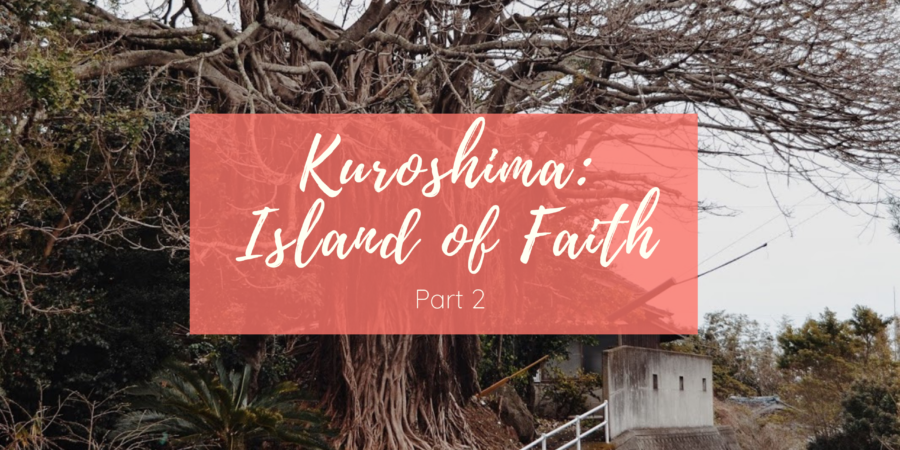Hey everyone! Here’s part two of my trip to Kuroshima, continuing from where I left of the other time. After lunch, the guide brought us to look at… trees! I know it sounds boring, but the history behind them is pretty interesting.
This is a camellia tree that will bear white flowers. It’s not the season now so it looks pretty ordinary, but I was told that when the tree is in full bloom, it looks really beautiful. The tree was actually brought over as a fully grown tree so that oil could be made from it. It’s crushed, steamed and then pressed. The oil was use for cooking and the remains after pressing were used to wash hair.
Back when oil was precious, they would cut off all the buds before it bloomed, but the island no longer makes oil, so the flowers are left in peace.
信仰復活の地
Our next stop was a monument called 信仰復活の地 (shinkou fukkatsu no chi).
It was originally called 信仰発祥の地 when it was built in 1956, which basically means “place where the faith started”. However, after a few years, everyone decided to change the name to the current one, which means “place where the faith was revived” because the people here have always been Christians, so to called this the “starting point” wasn’t so accurate.
So what was the deal with this place?
This used to be where the home of the Deguchi family was. Deguchi and his son were Christians who, having heard that there was a priest in Nagasaki, sailed from Kuroshima to Nagasaki under the cover of darkness to inform of the priest that there were believers. Back then, baptisms were done by senior members of the island, so while the people of Kuroshima considered themselves to be Catholic, they also knew that the baptisms done weren’t ‘official’. By bringing a priest over, everyone could be rebaptised and join the Catholic Church. In addition, each family was teaching the next generation the prayers, and so the Deguchis also learnt the proper prayers and taught that to the rest of the island. Lastly, the first mass at Kuroshima was also held at the Deguchi home.
Right now, six different families take turns to maintain this memorial. If you look closely, you can see where the words have been chipped off and the new ones added too.
I wanted to finish everything today, but I’m back in Fukuoka and using a pocket wifi (that has a limited data plan) so I better stop now. I’ll probably blog about my graduation ceremony since that’s happening next, but I’ll finish blogging about this trip after that.
